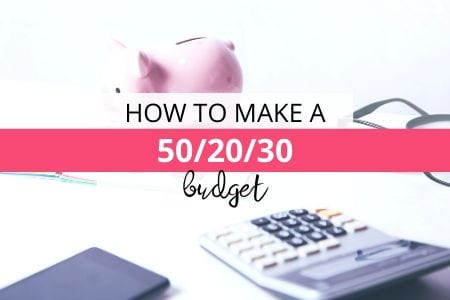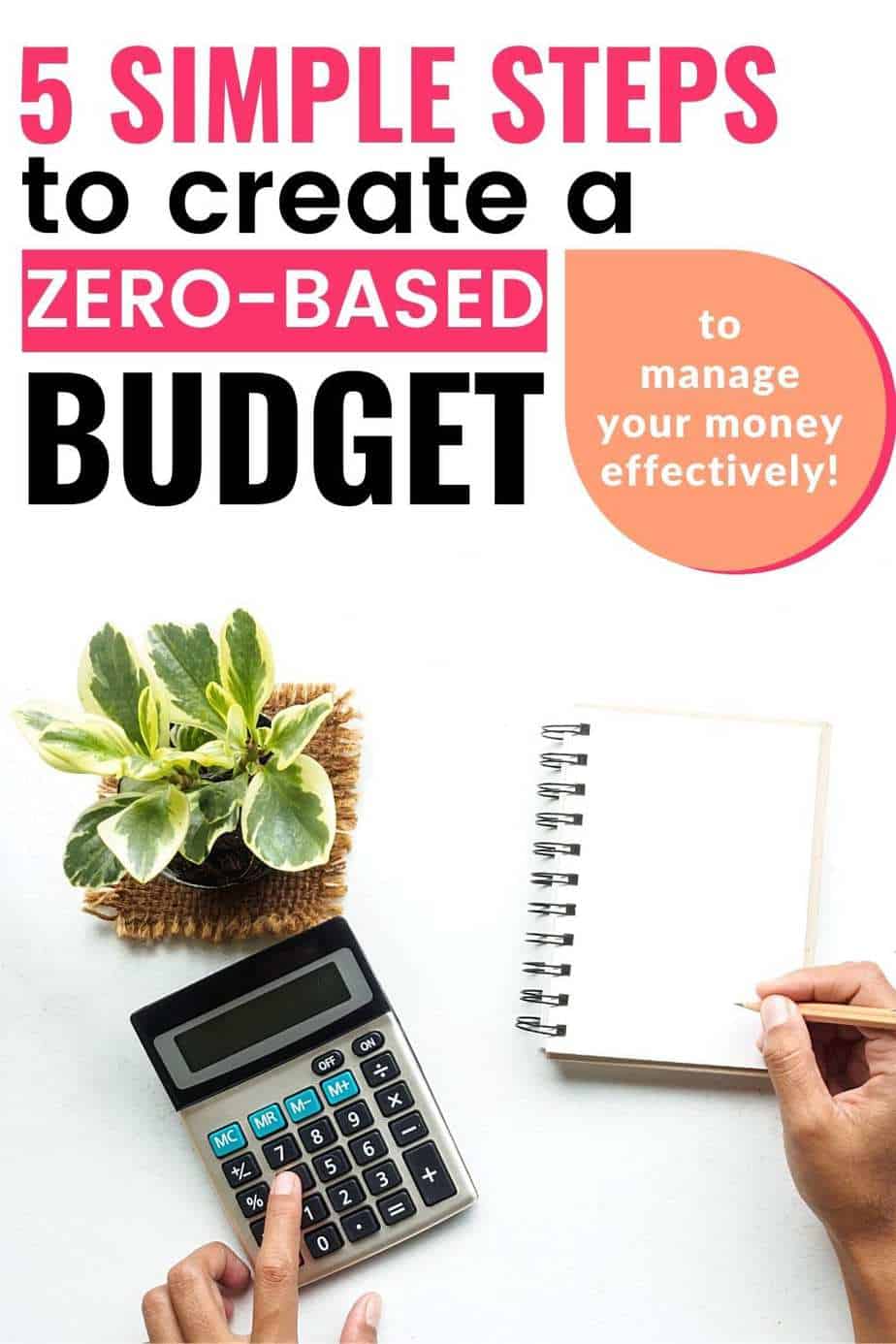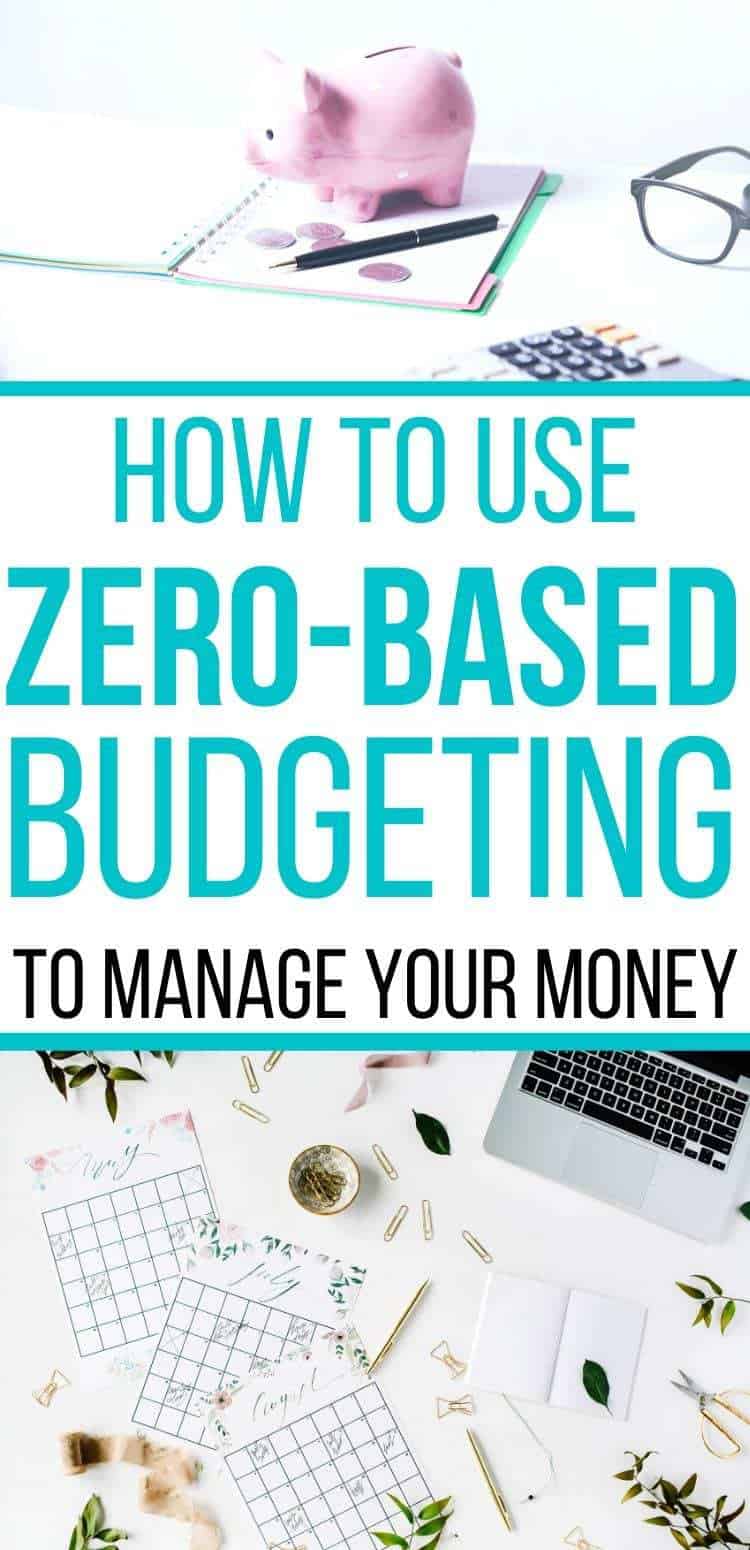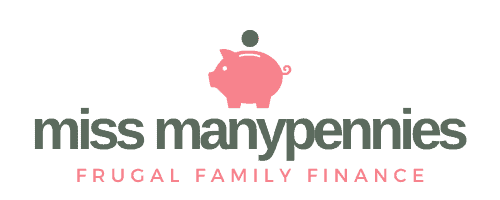How to Use a Zero-Based Budget to Manage Your Money
Posts contain affiliate links, see disclosure for more details.
Choosing a budgeting method is like choosing your favorite type of ice cream or toppings for your pizza. What appeals to your tastes may not work for someone else.
A zero-based budget system is a great example. This budgeting method, made popular by finance guru Dave Ramsey, could be just what you need if you want to know exactly where your money is going each month, with no room for wasted dollars and cents.
If you’ve never tried zero-based budgeting before, there’s a little bit of a learning curve involved with getting started. But the results can pay off if you’re able to streamline your expenses, pay off debt and even better, start saving more money each month.
Sound good? Then here’s what you need to know to put a zero-dollar budget system to work.
Zero-based budget definition

Zero-based budgeting is actually a fairly simple concept. The idea is that when you’re making your monthly budget, you give every single dollar you have to spend a job.
This type of budgeting method is a little more in-depth than other budget systems. For example, the 50/30/20 budget takes a broader approach, divvying up 50 percent of income to needs, 30 percent to wants and the rest to saving or debt repayment.
The goal with a zero-based budget is to have zero money left over each month because you’ve earmarked every cent to a specific expense or expense category.
Who is a zero-dollar budget system good for?
A zero-based budget is someone anyone can use, whether you’re budgeting for the first time or you’ve been keeping track of your money for years. But it may appeal more to some types of people than others.
For instance, you may prefer a zero-based budgeting method if you:
- Want to eliminate wasted money in your budget
- Are a numbers nerd who likes having a detailed accounting of income and expenses
- Want to trim spending as much as possible to increase savings or pay off debt
- Need a system to help you avoid overspending
- Have tried other budgeting methods and found they haven’t worked
Keep in mind, the goal with zero-based budgeting isn’t just to spend all of your money until there’s nothing left. It’s spending all of your money down to zero with a purpose.
In other words, this type of budgeting method requires you to spend with intention. A zero-based budget can work hand in hand with a cash envelope system if you’re just getting started with budgeting.
Are there any downsides to zero-based budgeting?
That depends on what you want to get out of budgeting. And whether a zero-sum budget is right for you can also hinge on how you make money.
Zero-based budgeting means you really have to dig into the numbers and take a close look at how and where you spend money each month. So if you’re not a details person, it may not work as well for you.
Setting up a zero-dollar budget can also be tricky if you have irregular income because you freelance, make money from side hustles or run an online business. It can be harder to assign out every dollar of income to different expenses when you don’t know exactly how much income you’ll have from month to month.
How to start a zero-based budget

If you want to give zero-based budgeting a try, then it all comes down to having the right process. Remember, this is going to be different than the 50/30/20 method or a half-payment budget.
1. Start by tracking your expenses
Making a zero-based budget or any budget for that matter only really works if you know what you’re spending each month. If you’re not tracking your spending already, now’s the time to start.
There are different ways to track spending and you don’t have to overcomplicate things. You could use a budgeting app that’s linked to your bank account, for example. Or you can record expenses in a spreadsheet or notebook.
Finding a system that works for you is the first step but the most important thing is being able to see at a glance where your money goes each month. This can help you in step three of making a zero-based budget, when it’s time to start giving each dollar a job.
2. Add up your income
The next step in creating your zero-based budget is knowing how much income you have to work with. So start by adding up all of your after-tax income for the month.
That can include money that comes from:
- Working a regular 9 to 5 job
- Side hustling or freelancing
- Having a money-making blog
- Running a small business
- Government benefits, such as unemployment if you’ve been laid off
- Investment income
- Child support or alimony payments
Every dollar counts for making your budget. So even if it’s only a few bucks you’re making from a side gig or something else, make sure to add it in.
3. Create your expense categories
Zero-based budgeting is more detailed than other budgeting methods because you’re doling out money to individual expenses. Listing out all of your expenses can be a little overwhelming at first so it can be easier to start with categories.
For example, your zero-dollar budget categories might look something like this:
- Housing (which could include rent or mortgage payments, property taxes, insurance, etc.)
- Utilities (i.e. electric, water, gas)
- Cell phone and internet services
- Groceries (dining out can be a separate category)
- Transportation (i.e. gas, car insurance, public transportation passes, etc.)
- Clothing
- Entertainment
- Hobbies and recreation
- Health care
- Credit card payments
- Student loan payments
- Other debt payments
- Savings (including emergency savings, college savings, retirement plan contributions, etc.)
Your categories may look different, depending on how you spend. It’s also helpful to create a category specifically for variable expenses that you might pay annually, biannually or quarterly.
Say you pay your car insurance every six months instead of monthly, for example. To include that in a zero-based budget, you’d take your total premiums paid, divide by 12, then budget for that amount each month.
You take that money and park it in savings temporarily. That way, when it’s time to pay your six-month premium, you’ll have the cash ready to go instead of scrambling to find it in your budget.
4. Put each dollar of income to work
Once you’ve got your income added up on one side and your expense categories lined up on the other, you can get into the nitty-gritty of making a zero-sum budget. This is where you take your income and spread it out across your expenses.
So for example, say that you make $4,000 a month. Your zero-based budget might look something like this:
| Expense | Budgeted Amount |
| Housing | $1000 |
| Utilities | $300 |
| Cell phone and internet | $150 |
| Groceries | $450 |
| Dining out | $100 |
| Transportation | $150 |
| Clothing | $200 |
| Entertainment | $200 |
| Hobbies and recreation | $150 |
| Health care | $150 |
| Credit card payments | $150 |
| Student loan payments | $350 |
| Other debt payments (car loan) | $350 |
| Savings | $300 |
| Money Remaining | $0 |
Again, the point is to have zero money left over. That doesn’t mean that if you run out of money to budget you can keep spending with a credit card, however. That would defeat the purpose of the zero-based budget system, which is to keep you in control of where your money goes.
If you’ve done your budget and your money remaining is a negative number, that means you’re spending too much. So what you’ll need to do now is go back through each of your expenses and look for things you can cut out to get to zero.
And if you have money left over, that’s a good thing! That means you’re living below your means and spending less than you earn. What you can do then is either allocate more money to debt repayment so you can get out of debt faster or beef up your savings.
5. Rinse and repeat
Making a zero-based budget isn’t something you can do just one time. To make this kind of budget system work well, you have to spend time reviewing your income and spending every month and reassigning money to different expenses categories.
Here are a few final tips for getting the most out of a zero-dollar budget if you’re trying it for the first time:
- Pick one day a month to work on your budget and block off an hour or two to do it
- Keep track of all your spending, including cash and minor purchases
- Factor in irregular expenses that you may only pay a few times a year
- Use your average monthly income as a baseline if your income is irregular from month to month
- Regularly review expense categories to see what can be eliminated or what needs to be added
The bottom line
Making a zero-based budget can be a step in the right direction if you’ve been struggling with staying on top of your expenses. It takes a little legwork at first but once you get your zero-dollar budget in place, maintaining it becomes easier. And you can start to reap the benefits of this kind of budgeting system almost right away if being intentional with your money means saving more and spending less.
Author bio:
Rebecca Lake is a freelance writer and blogger specializing in personal finance. She writes about making money, saving money and achieving financial freedom for families at Boss Single Mama. For more money tips, you can find her on Pinterest or follow her on Twitter.
Read more:



Pin it!









I have never heard of this before, some good solid financial advice. i will be using this method, Thanks